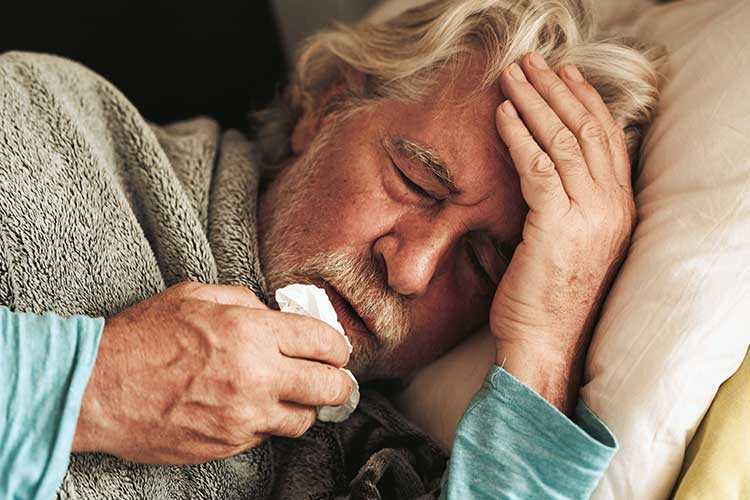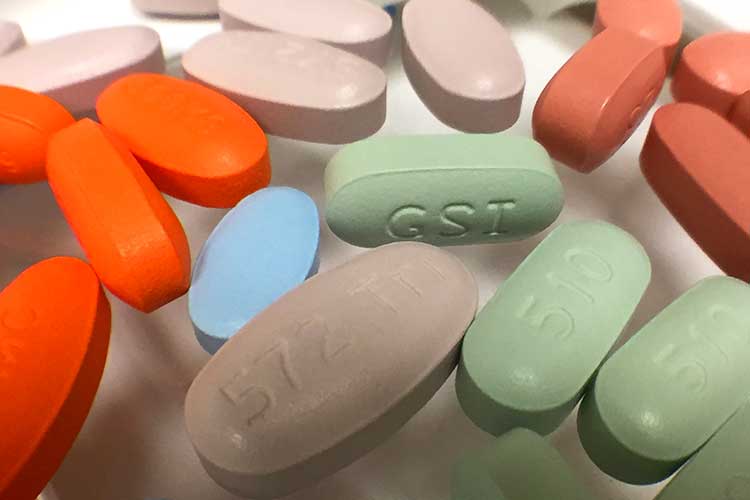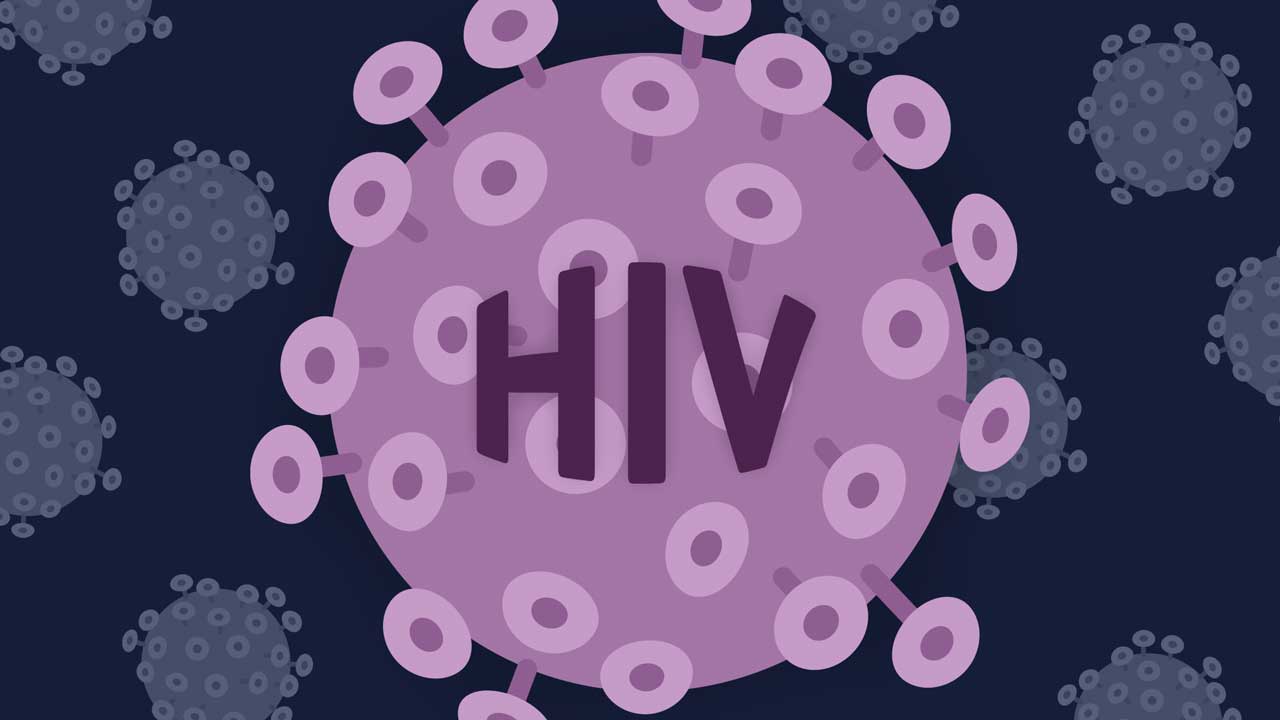HIV remains a major global public health issue, having claimed around 42.3 million lives in total (WHO 2024).
While its severity cannot be overstated, HIV infection is now a manageable chronic health condition - people who have HIV are able to live long and healthy lives. This is a result of greater access to effective HIV prevention, diagnosis, treatment and care (WHO 2024).
What is HIV?
Human immunodeficiency virus (HIV) is a virus that affects the immune system. Without treatment, HIV can lead to acquired immunodeficiency syndrome (AIDS) (Healthdirect 2024).
HIV is transmitted via body fluids - specifically, blood, breast milk, semen and vaginal fluids and rectal fluids (Healthdirect 2024).

What is the Difference Between HIV and AIDS?
- HIV stands for human immunodeficiency virus. It’s the virus that causes HIV infection.
- AIDS stands for acquired immunodeficiency syndrome. It’s the most advanced stage of HIV infection.
(WHO 2024)
AIDS is diagnosed when a person with HIV infection has a very compromised immune system and develops one or more specific illnesses (Better Health Channel 2023a).
People with HIV infection who are receiving effective treatment are unlikely to develop AIDS, as treatment helps to protect the immune system (Better Health Channel 2023a).
HIV in Australia
There are about 30,000 people in Australia living with HIV (Health Equity Matters 2024).
Although rates of HIV have decreased in Australia overall, they remain higher in Aboriginal and Torres Strait Islander people (3.2 per 100,000 people) compared to non-Indigenous Australians (2.2 per 100,000) (Health Equity Matters 2024).
This may be related to broader determinants of health that affect Aboriginal and Torres Strait Islander people, such as education, employment, housing and transport, which can create barriers to diagnosis (Ward et al. 2021).
How is HIV Transmitted?
HIV is spread via the blood, breast milk, semen, vaginal fluid or rectal fluid of people who have the virus. Note that HIV cannot be spread through day-to-day contact such as kissing, hugging, shaking hands or sharing personal objects (Better Health Channel 2023a).
Situations in which HIV may be spread include:
- Anal or vaginal sex without condoms or other protection
- Sharing injecting equipment such as needles or syringes
- Transmission from mother to child during pregnancy, childbirth or breastfeeding
- Through tattooing or other procedures that involve unsterile or reused equipment
- Needlestick injury (rarely).
(Better Health Channel 2023a)

Symptoms of HIV
HIV is initially difficult to recognise, as in the first stages of infection, most people have no symptoms or experience a mild flu-like illness with symptoms such as fever, headache, rash or sore throat (WHO 2024).
As the infection progresses, it gradually weakens the immune system; other signs and symptoms may then occur. These can include swollen lymph nodes, weight loss, fever, diarrhoea and cough (WHO 2024).
Without any treatment, a person who has HIV is at risk of developing severe illnesses such as tuberculosis (TB), cryptococcal meningitis, severe bacterial infections and cancers such as lymphomas and Kaposi’s sarcoma (WHO 2024).
Who is at Increased Risk of HIV?
- Cisgender men, transgender men, transgender women and gender-diverse-identifying people who have sex with men
- People who have sex with people from countries with a high rate of HIV infection
- People who inject drugs
- People with a sexually transmitted infection (STI)
- People who have gotten tattoos or other piercings overseas using unsterile equipment
- People who have undergone a blood transfusion in a country where the blood supply is unsafe
- People who have sex with a person with a high risk of HIV as listed here.
(Healthdirect 2024)
Preventing HIV
Individuals are able to reduce the risk of HIV infection by limiting exposure to known risk factors. Steps that can be taken include:
- Condom use
- Testing and counselling for HIV and STIs
- Voluntary male circumcision
- Not sharing needles, syringes or any injecting equipment
- Ensuring tattooing and piercing is performed using sterilised equipment
- Harm reduction for people who inject and use drugs
- Not sharing personal items that could be contaminated with blood (e.g. toothbrushes or razors)
- Regular STI screening for people who engage in regular, casual sex with different people.
(WHO 2024; Healthdirect 2024)
Pre-exposure Prophylaxis (PrEP)
Pre-exposure prophylaxis (PrEP) is an HIV prevention option for people who don’t currently have HIV but who are in the high-risk group for contracting HIV. This greatly reduces the chance of someone who is HIV-negative contracting HIV from an HIV-positive person (Healthdirect 2024).
PrEP consists of two antiretroviral medicines that are also used to treat people who already have HIV. It can be taken daily or on demand (Better Health Channel 2023b).

Post-exposure Prophylaxis (PEP)
Post-exposure prophylaxis (PEP) is an alternative way to take anti-HIV medication to prevent HIV. Unlike PrEP, PEP is taken post a known or suspected exposure to HIV. PEP is taken for 28 days and has to commence within 72 hours of exposure to HIV (Better Health Channel 2023a).
Diagnosing HIV
HIV is diagnosed via a blood test, rapid antibody test or self-test (NSW Health 2025).
These tests are typically able to detect HIV at least two to four weeks post-exposure (Better Health Channel 2023).
Because of this delay, additional blood tests may be necessary after recent exposure to be certain that a new infection has not occurred (Better Health Channel 2023).
Treatment for HIV
Read: Antiretroviral Therapy in the Treatment of HIV and AIDS
Currently, there is no cure or vaccine for HIV infection. However, antiretroviral (ARV) drugs can control the virus and help to prevent transmission to other people (WHO 2024).
Antiretroviral therapy (ART) is the use of HIV medicines to treat HIV infection. People who are on ART take a combination of HIV medicines according to a regular schedule (typically daily, monthly or every second month, depending on the type of medication used) (HIVinfo 2025).
ART stops HIV from multiplying, which reduces the amount of HIV in the body (the viral load). Having less HIV in the body protects the immune system and prevents HIV from advancing to AIDS (HIVinfo 2025).
The main goal of treatment is to reduce the viral load of HIV to undetectable levels. People with an undetectable viral load have virtually no risk of transmitting HIV to others through sex (HIVinfo 2025).
ART does not cure HIV, but it helps people who have HIV to live longer and healthier lives (HIVinfo 2025).
Test Your Knowledge
Question 1 of 3
What is the difference between HIV and AIDS?
Topics
Further your knowledge
 Free
Free Free
Free Free
FreeReferences
- Better Health Channel 2023a, HIV and AIDS, Victoria State Government, viewed 4 March 2025, https://www.betterhealth.vic.gov.au/health/conditionsandtreatments/hiv-and-aids
- Better Health Channel 2023b, Pre-Exposure Prophylaxis (PrEP) for HIV Prevention, Victoria State Government, viewed 4 March 2025, https://www.betterhealth.vic.gov.au/health/conditionsandtreatments/pre-exposure-prophylaxis-for-HIV-prevention
- Healthdirect 2024, HIV Infection and AIDS, Australian Government, viewed 4 March 2025, https://www.healthdirect.gov.au/hiv-infection-and-aid
- Health Equity Matters 2024, HIV in Australia 2025, Health Equity Matters, viewed 4 March 2025, https://assets.healthequitymatters.org.au/wp-content/uploads/2024/12/03235719/HEM_HIV-in-Australia-25.pdf
- HIVinfo 2025, HIV Treatment: The Basics, U.S. Department of Health and Human Services, viewed 5 March 2025, https://hivinfo.nih.gov/understanding-hiv/fact-sheets/hiv-treatment-basics
- NSW Health 2025, HIV Infection Fact Sheet, New South Wales Government, viewed 4 March 2025, https://www.health.nsw.gov.au/Infectious/factsheets/Pages/HIV-infection.aspx
- Ward, J, Gilles, M & Russel, D 2021, ‘HIV Infection in Aboriginal and Torres Strait Islander People’, HIV Management Guide for Clinical Care, viewed 4 March 2025, https://hiv.guidelines.org.au/management/hiv-infection-in-aboriginal-and-torres-strait-islander-people/
- World Health Organisation 2024, HIV and AIDS, WHO, viewed 4 March 2025, https://www.who.int/news-room/fact-sheets/detail/hiv-aids
 New
New 
